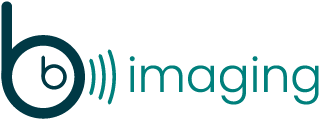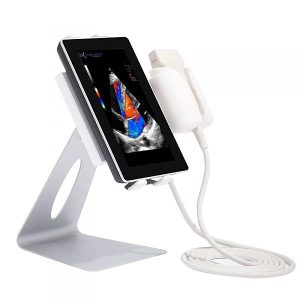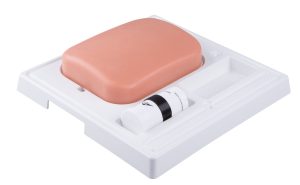Happy New Year friends! If you’re anything like us, the beginning of a new year fills you with excitement, anticipation, and the sudden urge to organize everything. It also brings up that age-old question about resolutions…
Resolutions are goals that are often personal in nature—changing up what you eat, increasing how often you exercise, mastering a new language, etc. But what about your professional life? You spend so much time at work and so much energy building your career that your professional life can also benefit from its share of annual reflection.
With that idea in mind, we’ve put together a 6-step guide to help you set (and keep!) professional goals. We call them the 6 Vowels of Goal Setting.
1. A – Analyze the Past
At the start of a new year, it’s easy to look ahead. But it can be more productive to look backward first, especially when it comes to goal-setting. Don’t limit yourself to just the last year either! Consider your entire professional career or go back to your college days to see what goals you set for yourself and how you performed in meeting them. Now, look at those goals in light of today. What was important about them then, and is that still true today? Do they still align with your career path, or have you pivoted? How have industry changes affected your goals?
As you look back, take special care to identify past successes – celebrate them now by remembering how you felt and why that particular achievement fulfilled you. Now take that feeling into this goal-setting exercise as motivation!
2. E – Evaluate Your Present Values
Now that you know what the past holds, let’s take a look at the present. What was important to you in previous years may not be important to you now. Your values may have changed, and therefore your goals should too.
*Quick note: While we’re focusing on setting professional goals, let’s remember that values are very personal. Your professional life is impacted by your personal life, and vice-versa, so it’s totally okay to have some crossover here.
You can identify your present values by asking yourself some questions like:
· What do I enjoy or despise doing? Ex: “I don’t like attending meetings”
· What do I want more or less of? Ex: “I want more time with family”
· What do I want to do more or less of? Ex: “I want to do more volunteering”
Look at those answers and start to think about how your new goal could help you live the way you want to live today. You don’t like meetings? Applying for the open management position may not be a good fit. Do you want more time with your family? Perhaps a remote position or finding a workplace closer to home would interest you. Do you want to do more volunteering? Think about working for a company that aligns with that service-based mentality or finding a part-time position.
Obviously, these are just examples, and your specific values may not be clear immediately. Give yourself the space to think about these questions and allow clarity enough time to surface. If you feel stuck, try a visualization exercise — there are so many techniques to choose from!
3. I – Identify the Facts
You’ve done a lot of self-reflection and soul-searching. That’s awesome. Now it’s time to see what facts you can dig up. It’s easier to work in alignment with your natural strengths than to work against your natural weaknesses, so you need to identify them. You can do that with online tests like StrengthsFinder, or a free alternative. You can also register for a free Cloverleaf account if you’d like to try a variety of assessments specifically for the workplace.
You can also have a discussion with a manager or mentor. Ask them about their perceptions of your work and strengths. What are the tasks they hand over to you without a second thought? What are you known for around the office? What specific skills or expertise do others turn to you for? The answers to these questions will help you identify the things you are already good at.
4. O – Outline Your Goals
Whew! If you’ve taken the time to really dive deep into the first three steps, give yourself a pat on the back. Now grab something to write or type with, and let’s use the SMART goal setting system to take all that knowledge and craft a new goal.
You’ve probably heard of SMART goals before. SMART goals are specific, measurable, achievable, relevant, and time-bound. Let’s review each section:
· Specific: What are you aiming to achieve? Vague goals will only frustrate you. Be as specific as possible so that you know exactly what you’re aiming for.
· Measurable: What will you measure so that you know whether or not you have achieved your goal? If a goal is unmeasurable, it is likely too vague.
· Achievable: Can you accomplish this goal? Your goal should be ambitious, but realistically doable.
· Relevant: Why is the goal important to you? Your goal should align with the information you gathered in the previous steps, especially your values.
· Time-bound: How long do you have to complete this goal? Setting a deadline will motivate you and help with the prioritization of your goal.
Okay, that’s a lot of info. Let’s do a quick example just to get the inspiration really flowing. Let’s say you love your workplace and the team you’re working with, and your goal is to be a really great teammate to them in return. Your goal might go something like this:
· Specific: I will provide regular encouragement to my teammates.
· Measurable: To encourage my teammates, I will supply at least one kudo every week for the teamwide conference call.
· Achievable: I can supply kudos through the online form, which is quick, easy, and accessible wherever I have an internet connection.
· Relevant: A healthy atmosphere at work is important to me, and without it, I would have to search for a different job. I love my job, so I will do my part to keep the culture positive.
· Time-bound: I have until the end of the year to submit a minimum of 52 kudos (one per week)
Hopefully, that is helpful to you in how to set goals, and what those goals should look like according to the SMART system. If you’re still struggling with what goals to set, check out this list from Top Resume and be sure to explore all the links provided—many of them include ideas for workplace goals. You might also scan these tips on looking for goals that go beyond your own desk.
If you’re looking for an easy place to start, some of the most common workplace goals are learning a new skill or achieving a certification. That’s why BB Imaging’s benefits include coverage of conference and certification fees, educational reimbursements, and professional development perks!
5. U – Understand What’s Working
You did it! You’ve created a shiny new goal. Before you set out on your journey to accomplish it, here are a couple of tips for success to help along the way.
First, remember to track your progress. Measure what you said you were going to measure so that you know how you’re doing! This doesn’t have to be difficult. Whether it’s a checkbox system, an app, a repeating task in your calendar, or something else, use the tools at your disposal to help remind you and keep you focused.
Second, it’s okay to stop and reevaluate. Your values and circumstances may change during the year, and if that means you want to adjust your goal or change your goal altogether, that’s okay. Don’t count it as a failure, count it as a success in being self-aware.
And third, if you’re struggling to maintain focus and motivation, feel free to engage others to support and help you along the way. Friends, family, and coworkers can provide accountability and a little extra motivation to help you see it through. If you’re really serious about a big goal, you might consider hiring a credentialed coach who can help you get there.
6. And sometimes Y – You Can Fail
Yes, you can fail to meet your goals, and it really is okay! In his book Rich Dad Poor Dad, author Robert Kiyosaki makes a powerful statement: “Successful people don’t fear failure but understand that it is necessary to learn and grow from.”
So set your goals. Try your best to meet them. And if you fail, count it as a learning experience, reevaluate, and try again! As you do, celebrate even the smallest of victories, avoid the comparison trap, and remember every failure just makes you stronger, smarter, and more resilient.
You made it! We hope this guide is helpful and we’d love to know what professional goal you set for 2022!













